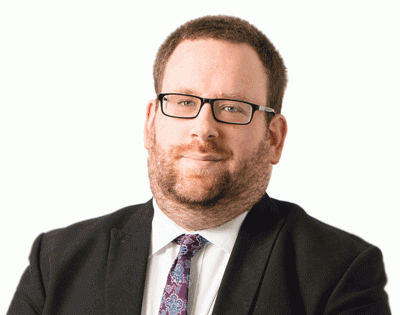Health and safety rules aren’t about ticking boxes – they’re about saving lives

New figures from the Health and Safety Executive (HSE) reveal 135 people in the UK died in the course of their work last year.
That’s 135 families who said goodbye to their loved one in the morning never realising it would be their last conversation.
When I see reports like this from HSE it makes me feel both disappointed and frustrated but sadly not surprised because every day we see the effects these kinds of losses have on bereaved families.
No one should go to work and never come home. No one should go to work and take a detour to a hospital on their way home. No one should be injured at work, period.
As with anything in life, the best route to protection is prevention and when it comes to preventing workplace accidents that means one thing – health and safety processes.
But how do we as a society regard such processes?
“It’s health and safety gone mad.”
“It’s just box-ticking.”
But it’s not mad. It’s not a box ticking exercise.
We know this because the reality is that a lot of safety regulations and laws have been made in hindsight. They have only come about because an accident or tragedy already happened and employers were made to learn from it.
Unsurprisingly, the HSE report shows the construction industry had the highest death toll with a total of 45 fatal accidents. This was followed by the 21 fatal accidents in agriculture, 21 fatal accidents in forestry and 21 fatal accidents in fishing industry. These industries are not alone sadly with 15 deaths occurring in the manufacturing industry and15 deaths in the transportation and storage industry.
The report also confirmed the most common causes of fatal accidents are falls from height, being struck by a moving object and being struck by a moving vehicle.
But why are these accidents happening? Yes, each of these industries has its own unique risks but that means each employer should know these risks and have the necessary measures in place (like PPE, safe processes and risk assessments) to counteract those risks and keep workers safe.
Health and safety should be so robust that we no longer have such a thing as a ‘dangerous job’ – after all, you wouldn’t tell a scaffolder they should expect to die at work simply because they work at height…
There are many words to describe these statistics but the word that keeps springing to mind is preventable.
Ultimately, it is the responsibility of an employer to keep workers safe. Every time they fail to carry out a risk assessment, provide the right PPE or fail to service tools they are putting staff at risk.
But time and again we see risk assessments and maintenance records regarded as ‘unnecessary chores’ that get in the way of ‘cracking on with the job’ and increasing efficiency for profit. So what happens next? More likely than not, corners are cut to reduce time and costs so companies can spend less and move to the next project as quickly as possible. A lot of companies lost time and profit during the pandemic (which they understandably want to recover).
But profits should never come with a human cost.
An accident can affect many areas of a person’s life. It is not just pain or financial concerns. Their mental health can be affected. Their families can be affected. Their social lives and confidence can be affected. Their ability to work in the future can be affected. The one thing that won’t be affected by cutting corners is the company’s bottom line.
We regularly see unsafe workplace practices which result in entirely preventable accidents. Often these arise from rushed practices and cutting corners. Sometimes it’s simply that some risks have never been considered. Education of health and safety is crucial to ensure companies are aware of all risks and not just those that are the obvious – or on a risk assessment template downloaded online!
Health and safety regulations are also fair. They do not demand perfection and bear the real work applications in mind.
Consider the language of laws and regulations. They talk about “taking reasonable steps” and “putting reasonable safety measures in place” – not perfect ones. Yet sadly, even reasonable, common-sense approaches often seem to fall by the wayside.
Until then, solicitors like myself will continue to fight for people and families affected by workplace accidents. Because successful legal actions don’t just secure damages for victims – they can help improve areas of the law and help improve safety processes in workplaces everywhere.
Senior Solicitor in our Glasgow GPIL department
